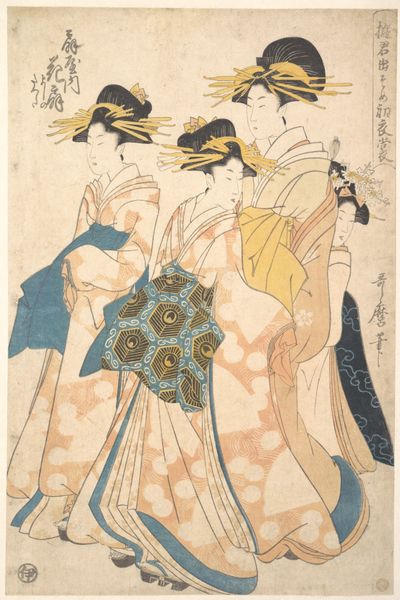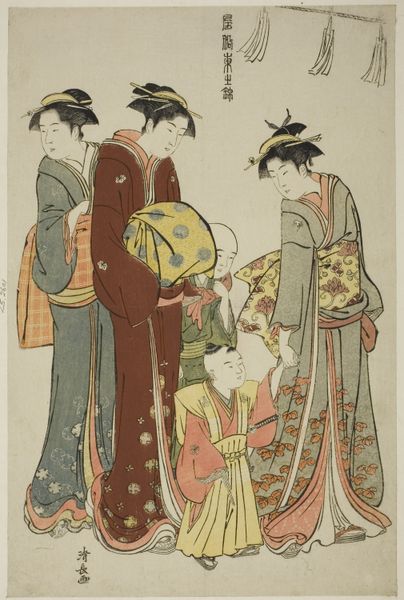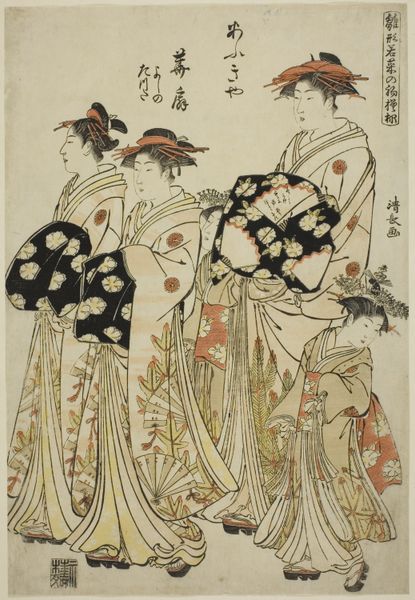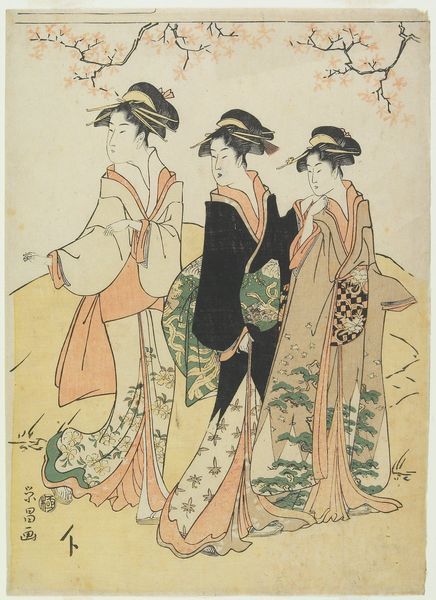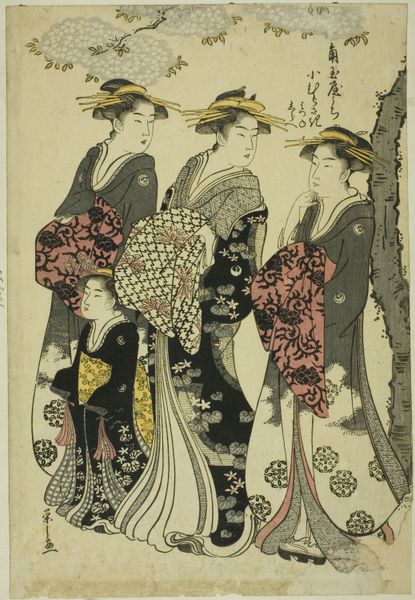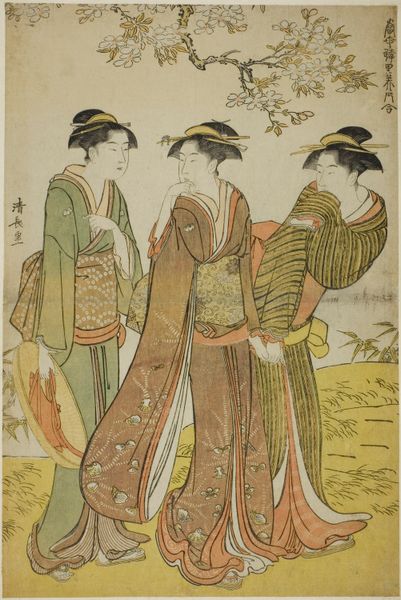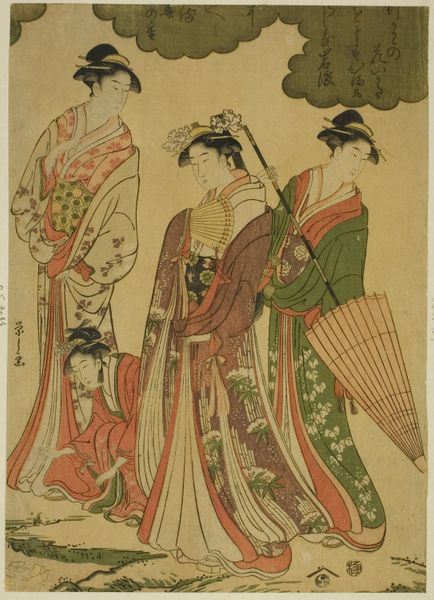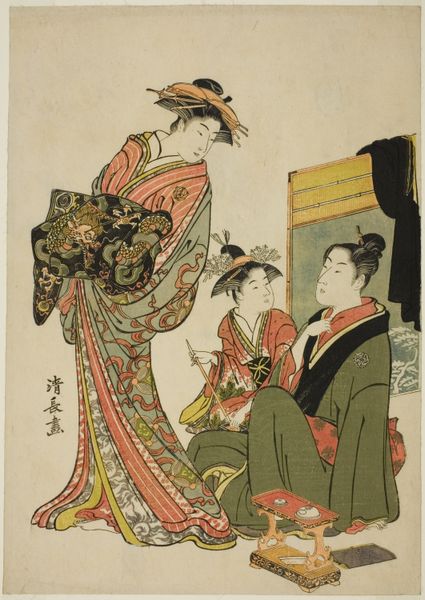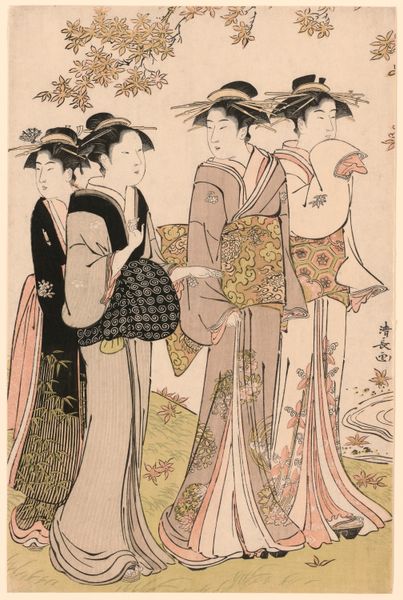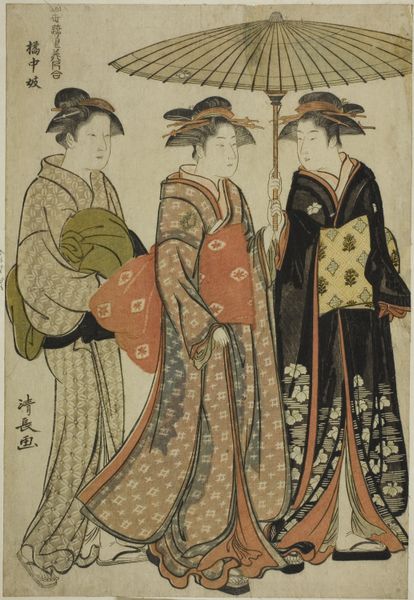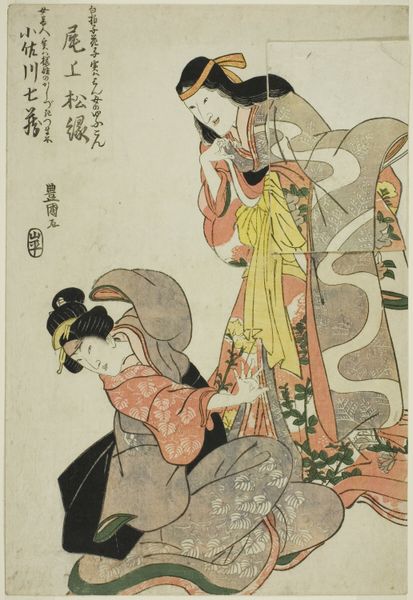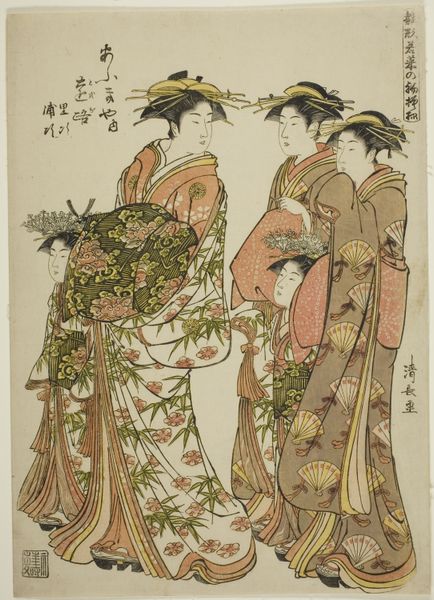
The Courtesans Hanaogi, Segawa, and Miyahito of the Ogiya c. 1796 - 1797
0:00
0:00
print, woodblock-print
#
portrait
# print
#
asian-art
#
ukiyo-e
#
woodblock-print
#
genre-painting
Dimensions: 37.3 × 25.9 cm (14 11/16 × 10 3/16 in.)
Copyright: Public Domain
Editor: This is a woodblock print called "The Courtesans Hanaogi, Segawa, and Miyahito of the Ogiya," created around 1796 or 1797 by Chōkōsai Eishō, and it’s currently housed here at The Art Institute of Chicago. I'm really drawn to the stylized elegance of the figures and the intricate details of their kimonos. What social or cultural narratives do you think this artwork is communicating? Curator: This *ukiyo-e* print offers a fascinating window into the Edo period's entertainment districts. Consider the role of these courtesans: they were celebrities, trendsetters. Eishō is not just capturing their likeness; he is showcasing the Ogiya, a high-class establishment, and reinforcing the social hierarchies of the time. How does the artist's depiction of the courtesans' clothing, the lavish kimonos, speak to their status within society? Editor: The kimonos definitely stand out – the patterns are so elaborate and varied. It's like they're wearing walking works of art! I suppose they functioned as both clothing and advertisement. Curator: Precisely. They were integral to a courtesan’s brand, demonstrating wealth, taste, and artistic awareness. Furthermore, consider the institutional role of *ukiyo-e* prints themselves. They were mass-produced and disseminated, shaping perceptions and fantasies surrounding the pleasure quarters. How might this popular imagery have impacted public attitudes toward these women and their profession? Editor: I never really thought about it as shaping public perception so broadly. I always just saw it as art. But mass production means a wide reach and influence on opinions, maybe even creating an idealized vision that isn't fully accurate. Curator: Exactly. By looking at the societal context, the economics of printmaking, and the social roles depicted, we can gain a more complete understanding of the complex narrative Eishō presents us. The political nature of imagery! What do you take away from considering it in this light? Editor: It really changes how I see it. Now, I'm less focused on the individual beauty and more on the whole system at play. It gives the print a new layer of complexity. Curator: Indeed. It's a reminder that art always exists within a broader social and political framework, influencing and being influenced by the world around it.
Comments
No comments
Be the first to comment and join the conversation on the ultimate creative platform.
